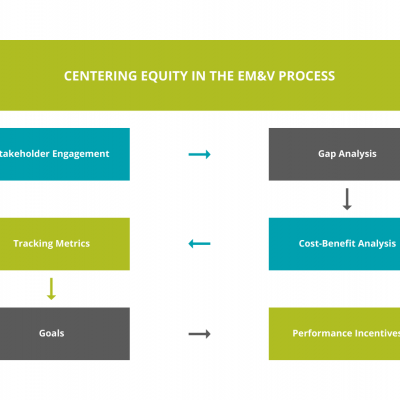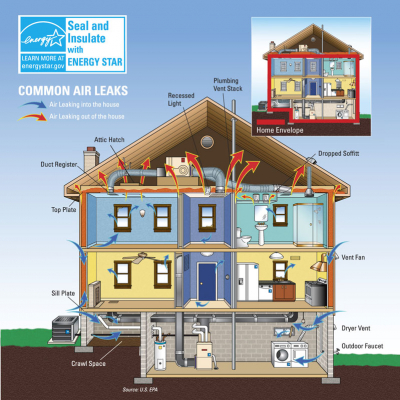

By Aditi Dalal | Thu, September 22, 22
The landmark Infrastructure Investment Jobs Act (Act), also known as the Bipartisan Infrastructure Law (BIL), aims to modernize and upgrade the national infrastructure by providing investments to tackle the climate crisis. Among other actions, BIL provides $500,000,000 for five years in funding for the State Energy Program (SEP) implemented by the U.S. Department of Energy (DOE). It updates the SEP requirements to align with the goals of the BIL.
The State Energy Program empowers states as decision-makers for creating program activities that meet their own specific energy goals and provides funding and technical assistance to tackle energy efficiency and affordability. The BIL adds to this funding, creating new requirements and recommendation for states to receive these formula-based allocations. State energy plans are due to the DOE on November 4, 2022. Let’s take a look at new initiatives and requirements for the State Energy Program.
Updates
Diversity, Equity, and Inclusion Framework
The new BIL funding for SEP encourages states to approach program funding with diversity, equity, and inclusion in mind and asks states to include underserved and underrepresented communities in program activities. This can mean hiring contractors and sub-contractors from historically underrepresented groups, directing funding to minority-owned businesses for state projects, and adding stakeholder engagement processes among other actions. A successful stakeholder engagement process assesses the needs of the entire community, positions the community as the main decision maker, and updates the community on progress towards its goals. States can access assistance from the DOE and look to NEEP’s Centering Equity Metrics Report to implement a successful, inclusive stakeholder engagement process.
Additionally, the administration’s Justice40 initiative covers the State Energy Program, meaning that 40 percent of the benefits from investments in SEP must flow to disadvantaged communities. The DOE encourages states to track benefits to ensure accountability and progress towards this goal.
Assistance
In previous years, the SEP provided technical assistance through peer-to-peer knowledge exchange and access to resources such as the National Renewable Energy Laboratory, but new guidance establishes additional assistance via Transformation Collaboratives. These collaboratives serve as voluntary opportunities for states to learn and share information on best practices, access DOE resources, and attend national convenings. If states participate in the voluntary collaborations, they will receive program design and development assistance from the DOE and SEP, access to subject matter experts and analysis, and networking opportunities with other states. BIL funding allows states to take this collaborative approach to tackle their energy needs.
In addition, states no longer have to meet the minimum cost matching requirement of 20 percent, although DOE encourages states to seek out other funding mechanisms.
Requirements and Optional Additions
The Bipartisan Infrastructure Law creates additional program requirements. In the new funding provision, states must support Transmission and Distribution (T&D) planning. This includes conducting studies on transmission line routes and alternatives, supporting local governments and tribes, preparing project designs and permits, and reaching out to affected stakeholders. DOE also emphasizes that the plan should define transmission and distribution activities that support decarbonization, grid modernization, resilience, electrification, and energy efficiency. This provision prepares states for future energy changes and demands while modernizing the system.
Additionally, the BIL requires states to create a State Energy Security Plan (SESP) which must address all energy sources and energy providers, provide a state energy profile, and address potential hazards to each energy sector or system.
Lastly, states can add programs that promote installation and use of demand-response technology and practices.
Recommendations
The Department of Energy highlights several program areas that states can adopt. Below are some recommendation for states forming programs that create more efficient buildings and target underserved communities.
Creating Scalable Weatherization Programs: In order to scale single-family home retrofit projects to meet decarbonization goals, it is important to shift away from programs that provide singular custom retrofits and to programs that provide a predetermined suite of retrofits which can be replicated within the same neighborhood or a similar home. Currently, program administrators implement retrofits programs using custom, comprehensive approaches that fit a singular home. Transitioning to a program that has a suite of offerings based on a single home typology (considering size, age, and systems) or certain neighborhood can expand the reach of programs and allow for a more streamlined approach.
- Example: Vermont leveraged $75,000 in SEP funds to create the Clearinghouse for Weatherization Information. The website provides information to building owners about various ways they can make their homes more energy efficient. It also provides other tools and resources – like contractor information – to help building owners take the first step. As a result of this website, Vermont has weatherized 2,000 homes.
Enabling Fuel Switching and Electrification: It is important to take actions to create energy efficient homes so residents use less energy overall. Programs can target building insulation and installing new heating and cooling systems to allow for more efficient temperature control, especially in buildings that have worn out, older technologies. Furthermore, switching to heat pumps can result in energy savings.
- Example: Maine enacted a goal of installing 100,000 high-efficiency heat pumps by 2025 into law. The bill establishes the Heating Fuels Efficiency and Weatherization Fund which uses federal funds, among others, to provide assistance to residents in installing high-efficiency heat pumps and other energy saving technologies. This fund also provides assistance with other energy efficiency measures. It aims to save Maine ratepayers more than 6.9 million MMBtu in cost-effective lifetime energy savings.
Labeling and Energy Efficiency: Research has shown that building operating costs are often overlooked factors in the real estate market and yet can be the most expensive part of owning a building. Home energy labels can help current and future residents better understand energy usage, reduce energy costs, and participate in energy efficiency and other programs. For current homeowners, home energy labels can provide resources and recommendations for efficiency measures and actions to reduce energy usage. For prospective owners and renters, they provide transparency in the utility costs of a new home or apartment. Providing this information upfront can ensure buyers and renters are fully aware of the energy costs of a property before they buy or rent.
- Vermont created the Vermont Home Energy Profile, a statewide home energy labeling program that is freely accessible to Vermont residents. It helps homeowners learn about their home’s energy efficiency and then provides a pathway for taking the most cost-effective and energy reducing measures.
Braiding Funding From Other Programs: Energy efficiency programs often target only a certain aspect of home improvement, leaving out residents who may not qualify for efficiency programs due to household issues like mold and other health hazards. This can lead to gaps in services that would benefit the household as a whole. To dissolve this problem, program administrators can braid funding and create programs that offer a wide variety of services to address energy efficiency, health, and other needs. A report by ACEEE highlights ways that program administrators can design programs for homeowners who may own homes in need of energy efficiency upgrades and preventative health measures. Programs can direct contractors to provide insulation, better heating or cooling equipment, and air sealing while also addressing health dangers like trip hazards. Program administrators can combine funding to address integrated issues to provide healthier, comfortable, and efficient homes.
- Philadelphia launched two pilot programs in 2021 to assess all-home needs for 40-50 homes each. The programs braided funding from over 20 sources to help low-income homeowners improve the health, safety, and efficiency of their homes.
Conclusion
The Bipartisan Infrastructure Law creates historic action in energy efficiency and adds a large amount of funding for State Energy Programs. With this funding, states can collaborate together and create innovative programs that target energy, efficiency, and health, while lifting up underserved communities. To learn more about federal funding, visit NEEP’s Federal Funding Resources page.


